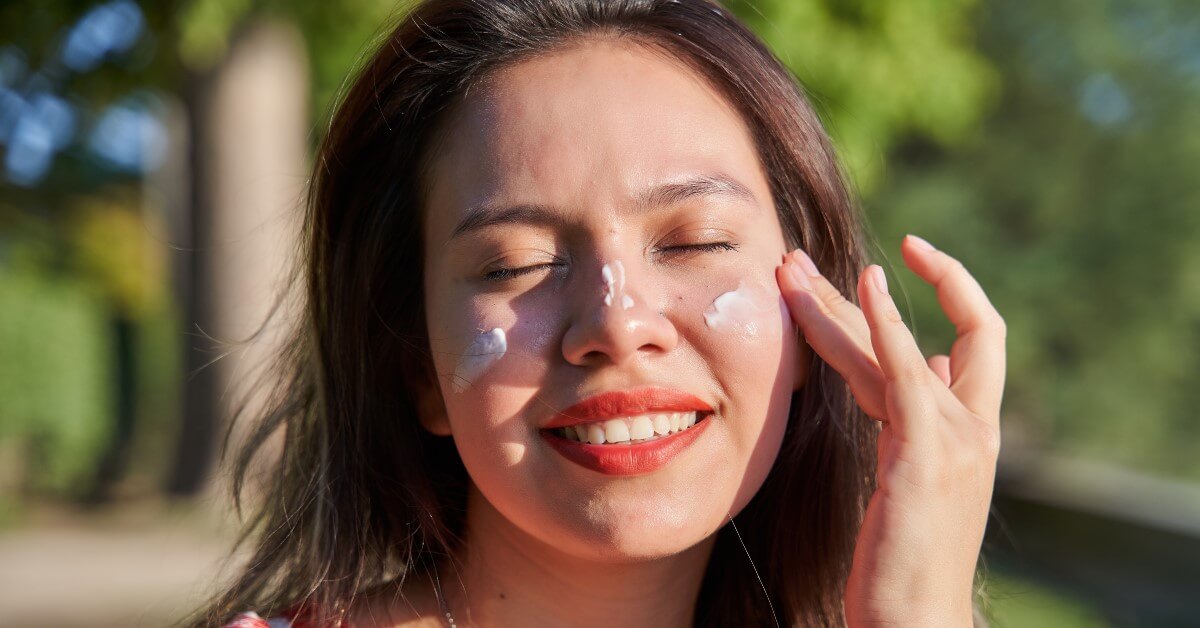
UV Rays – Good, Bad, or…Both? | 5 Tips for Healthy Sun Exposure | The Takeaway
Overview
Most of us know sunscreen on sunny days is recommended to protect against the sun’s potentially harmful ultraviolet (UV) rays. But did you know we should wear sunscreen every day, including overcast, cloudy days? And all that, regardless of skin color or tone?
Before we dive into how sunscreen can protect you, let’s get a bit of background on how the sun’s rays affect us and how sunscreen plays into it.
And the current science might surprise you.
UV Rays – Good, Bad, or…Both?
UV rays are a form of radiation emitted by the sun. They can also be reproduced by mechanical means such as tanning or black lights.
Overexposure to UV light damages DNA. This damage constitutes a suntan or sunburn and can lead to skin cancer – the most common cancer in humans.[1]
Based on this alone, one would conclude that UV light is bad, right? Well, not so fast – there is a paradox.
Humans need adequate sunlight to produce vitamin D, which is essential for several health factors, including bone health and the prevention of cardiovascular disease and certain types of cancer.[2]
Although, for good reason, the messaging from health authorities recently has focused on sun avoidance, there is a growing body of scientific evidence that, as a society, we don’t seem to be getting enough sun exposure.[2] And this goes well beyond just the need for vitamin D.
Insufficient sun exposure is tied to increased incidence of breast cancer, colorectal cancer, hypertension, and cardiovascular disease.[2]
So, on the one hand, we are warned of the risks of sun exposure but also aren’t getting enough of it to mitigate some potentially serious health risks. What to make of all this?
5 Tips for Healthy Sun Exposure
Like so many other things in life – the answer to enjoying the sun and obtaining its benefits while avoiding its dangers lies in moderation. Experts recommend 5-30 minutes of sun exposure (people with light skin color should be on the lower end of the scale while those with darker skin can be in the higher ranges) at least twice weekly for adequate vitamin D production.[3]
However, the need for sunlight also should be balanced with means to protect from too much of it:
1) Use sunscreen with an SPF of at least 30. Also, a full-spectrum type that protects against UVA and UVB radiation is ideal.
2) Sunscreen should be reapplied every two hours, especially after swimming or sweating.
3) Mid-morning to late afternoon is when the sun is at its strongest, so if you can, try to avoid direct sun exposure during these times – especially on sunny days.
4) Do not use tanning booths or sun lamps.
5) Use eye protection like UV-blocking sunglasses, as eyes are also susceptible to the sun’s radiation.
The Takeaway
Getting enough sun vs. getting too much of it will require further study to see if the scales can be tipped in either side’s favor. But the term ‘too much of a good thing’ can be confidently applied to the sun’s UV rays regarding human health.
This situation is where a little knowledge and some good sunscreen come in handy.
No sunscreen will completely block out UV rays, but wearing it can allow you to be outdoors longer and reap the known benefits of sunlight while reducing the risk of overexposure and serious health concerns.
So, wear your sunscreen every day and enjoy the outdoors (responsibly).
References:
- Green, A., Whiteman, D., Frost, C., & Battistutta, D. (1999). Sun exposure, skin cancers and related skin conditions. Journal of epidemiology, 9(6 Suppl), S7–S13. https://doi.org/10.2188/jea.9.6sup_7
- Alfredsson, L., Armstrong, B. K., Butterfield, D. A., Chowdhury, R., de Gruijl, F. R., Feelisch, M., Garland, C. F., Hart, P. H., Hoel, D. G., Jacobsen, R., Lindqvist, P. G., Llewellyn, D. J., Tiemeier, H., Weller, R. B., & Young, A. R. (2020). Insufficient Sun Exposure Has Become a Real Public Health Problem. International journal of environmental research and public health, 17(14), 5014. https://doi.org/10.3390/ijerph17145014
- Mead M. N. (2008). Benefits of sunlight: a bright spot for human health. Environmental health perspectives, 116(4), A160–A167. https://doi.org/10.1289/ehp.116-a160


